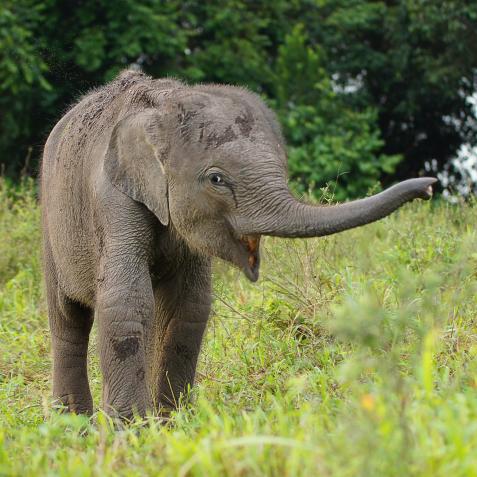
Pierre-Yves Babelon
Lemurs Can Sing with Rhythm
Researchers found the first nonhuman animal that can keep a beat.
Indri indri are a critically endangered species of lemur found in the forests of Madagascar. The largest of the lemur species at 24-28 inches long, the indri is covered in black and white fur. Active during the day, these animals climb trees and feed on a variety of leaves, fruit, flowers, and other vegetation native to Madagascar’s landscape.
Dr. Andrea Ravignani, a Dutch cognitive biologist, and a team of researchers tracked the lineage of humans and indris back to their last common ancestor– who walked the earth more than 77 million years ago. It turns out, our two species have more in common than we think… especially when it comes to singing.
In a study published in Current Biology, Dr. Ravignani and his colleagues explore the evolutionary origins of musical rhythm.

Massimo_S8
Young Indri Lemur on a tree.
Rhythm in other animals has been a topic of discussion for scientists because findings could provide insight into our own musical evolution. Lemurs are not the first animals thought to have rhythm– there have been findings in other organisms like parakeets, Snowball the cockatoo, and Ronan the California sea lion.
“Only a few primate species sing, so they are precious resources in our search for the evolutionary origins of human musicality,” said Dr. Aniruddh Patel of Tufts University.
Scientists from Madagascar and the University of Turin recorded the songs of 39 lemurs from 20 indri groups over a period of 12 years. Pouring over the songs, the researchers found the presence of rhythmic features also found in human songs.

Cavan Images
An Indri lemur, the first nonhuman mammal discovered to have rhythm.
The study found both a 1:1 rhythm, where intervals between sounds are the same length, and a 1:2 rhythm, where the second interval is twice as long as the first one, present in the lemur’s songs. They also noticed the presence of “ritardando,” a musical feature categorized by a gradual decrease in tempo, suggesting lemurs have a sense of beat.
“When you’re listening to a musical piece and dancing to it, you’re basically processing this very complex stream of sounds, extracting some regularities from it, and then predicting what’s coming next,” Dr. Ravignani said. “If an indri had some sort of metronome in its head going ‘tac, tac, tac,’ then they would likely produce what we see. It’s so close to human music — it’s quite astonishing.”
This marks the first time categorical rhythm has been found in a nonhuman mammal. It’s unknown whether human and indris’ shared ear for music is the result of a common ancestor or convergent evolution. Researchers suspect it’s a combination of the two.


















